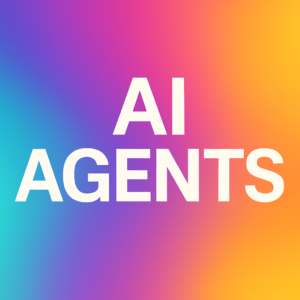Generative AI focuses on creating new and original content, chat responses, designs, synthetic data or even deepfakes. It’s particularly valuable in creative fields and for novel problem-solving, as it can autonomously generate many types of new outputs. Technically, this type of AI learns patterns from training data and generates new, unique outputs with the same statistical properties.
Generative AI examples are:
- Generate creative text
- Generate informational text
- Answer any type of question in a comprehensive and informative way
- Describe an image
- Generate a unique image based on a text prompt
- Translate text from one language to another
- Include the source of the model’s information in a response
Generative AI is a subset of machine learning (ML) that focuses on creating new data samples that resemble real-world data.
Generative AI models use neural networks to learn patterns in data and generate new content. Once trained, the neural network can generate content similar to the data it was trained on. For example, a neural network trained on a dataset of text can be used to generate new text, and depending on the model’s input, the text output can take the form of a poem, a story, a complex mathematical calculation, or even programming code for software applications.
Some uses of Generative AI:
- Art and Design:
- Generative AI algorithms, such as Generative Adversarial Networks (GANs) and Variational Autoencoders (VAEs), are employed by artists and designers to explore new creative territories.
- Artists use generative AI to generate abstract patterns, digital paintings, and sculptures that push the boundaries of traditional art forms.
- Designers leverage generative AI to create unique graphics, logos, and branding elements for businesses and organizations.
- Examples include AI-generated art exhibitions, digital installations, and collaborations between artists and AI systems to create hybrid artworks.
- Content Generation:
- Generative AI is utilized by content creators and marketers to generate a wide range of content types, including product descriptions, blog posts, social media content, and advertising copy.
- Natural Language Processing (NLP) models such as OpenAI’s GPT series are trained on large datasets of text to generate coherent and contextually relevant content.
- Content generation with generative AI enables businesses to streamline their content creation processes, produce content at scale, and maintain consistency across multiple platforms.
- Personalization and Recommendation:
- E-commerce platforms, streaming services, and social media platforms leverage generative AI for personalized recommendation systems.
- Generative AI algorithms analyze user behavior, preferences, and interactions to generate personalized recommendations for products, movies, music, and other content.
- By providing tailored recommendations, businesses can enhance user engagement, increase conversion rates, and improve customer satisfaction.
- Healthcare and Medicine:
- In healthcare, generative AI is used for medical image generation, drug discovery, and personalized medicine.
- AI-generated medical images are utilized for training diagnostic algorithms and simulating medical conditions for research purposes.
- Generative AI models are employed in drug discovery pipelines to generate novel chemical compounds with desired properties, accelerating the drug development process.
- Virtual Reality (VR) and Augmented Reality (AR):
- Generative AI algorithms play a crucial role in creating realistic 3D models, textures, and animations for VR and AR applications.
- These algorithms generate virtual environments, characters, and objects that enhance the immersion and interactivity of VR and AR experiences.
- Generative AI enables developers and designers to create dynamic and adaptive VR and AR content that responds to user input and environmental changes.
- Natural Language Processing (NLP):
- With advancements in NLP, generative AI models can generate human-like text, engage in conversations, and answer questions on a wide range of topics.
- Chatbots, virtual assistants, and conversational AI systems leverage generative models to provide interactive and personalized experiences for users.
- Generative AI in NLP enables businesses to automate customer support, enhance user engagement, and deliver seamless conversational experiences across digital channels.





